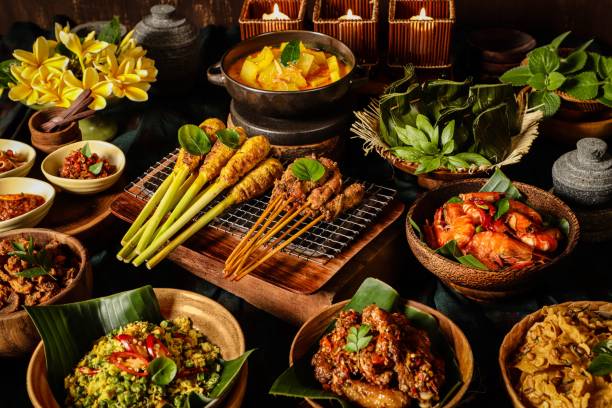When it comes to food, our taste buds have an adventurous side that’s always on the lookout for something new, something exciting. This insatiable curiosity has given rise to the world of fusion cuisine – a culinary journey that brings together the best of different cultures and flavors onto a single plate. Imagine the marriage of Italian pasta with Indian spices or Japanese sushi with Mexican salsa. Fusion cuisine is where culinary traditions from around the world meet, mingle, and create a symphony of flavors that tickle the palate and ignite the imagination.
A Melting Pot of Culinary Traditions
Fusion cuisine is a celebration of cultural diversity on your plate. It’s the result of bold experimentation, where chefs fearlessly blend ingredients, techniques, and traditions from various culinary backgrounds. Imagine strolling into a restaurant and discovering a menu that seamlessly fuses Thai herbs with French sauces or Caribbean jerk spices with Korean BBQ. This creative amalgamation not only tantalizes taste buds but also reflects the globalized world we live in today.
The Origins of Fusion
The roots of fusion cuisine can be traced back to ancient trade routes and conquests that brought cultures into contact with each other. As explorers and merchants traversed the globe, they exchanged not only goods but also culinary traditions. These interactions birthed dishes that showcased the marriage of ingredients from different lands.
In recent times, fusion cuisine gained prominence in the 1970s and 80s, when chefs began experimenting with ingredients and techniques beyond their cultural boundaries. This movement was a rebellion against the rigid culinary norms of the past and a celebration of the freedom to mix, match, and create anew.
The Art of Balancing Flavors
Creating successful fusion dishes requires an understanding of flavors that complement each other. Chefs need to be mindful of how ingredients interact and how different cooking methods impact taste and texture. A harmonious fusion dish should enhance the strengths of each component, creating a beautiful blend that’s more than the sum of its parts.
For example, the delicate sweetness of mango can complement the spiciness of Thai curry, while the creaminess of avocado can provide a luxurious contrast to the crunch of tempura. It’s all about achieving balance and synergy on the plate.
Cultural Sensitivity and Respect
While fusion cuisine is an exciting playground for culinary experimentation, it’s essential to approach it with cultural sensitivity and respect. Chefs need to be well-versed in the traditions they’re drawing from, understanding the significance of ingredients and techniques in their original contexts. This ensures that fusion dishes are not mere cultural appropriations but thoughtful interpretations that pay homage to their roots.
Fusion Favorites Around the World
Fusion cuisine has produced a plethora of mouthwatering dishes that have captured the hearts and palates of food enthusiasts worldwide. Here are a few favorites:
- Sushi Burritos (Sushirito): A marriage of Japanese sushi and Mexican burritos, this dish wraps sushi ingredients in a seaweed and rice casing, creating a convenient and flavorful handheld delight.
- Kimchi Tacos: Korean kimchi meets Mexican tacos, resulting in a harmonious explosion of spicy, tangy, and savory flavors.
- Paneer Tikka Pizza: An Indian twist on the Italian classic, this pizza features marinated paneer (Indian cottage cheese) as a topping, along with traditional Indian spices.
- Sushi Pizza: Blending Italian and Japanese influences, this dish uses a crispy rice crust topped with fresh sashimi, avocado, and a drizzle of soy sauce.
- Ramen Burger: Japanese ramen noodles replace the traditional bun in this burger, creating a unique fusion of textures and tastes.
The Ever-Evolving Culinary Landscape
Fusion cuisine is a testament to the dynamic nature of food culture. As long as creativity knows no bounds, fusion dishes will continue to evolve. This culinary crossroads allows us to travel the world through our taste buds, experiencing the richness of diverse cultures in a single bite. So, the next time you’re presented with a dish that blends unexpected ingredients, embrace the adventure and savor the magic of fusion cuisine.


















+ There are no comments
Add yours